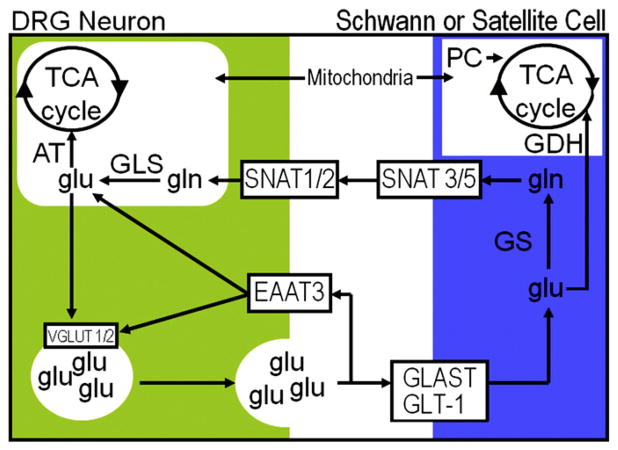Fig. 2.
Glutamine cycle in peripheral nervous system. Glutamate (glu) can be taken up by neurons or glia. In neurons, glu is taken up by excitatory amino acid transporter 3 (EAAT). Schwann or satellite cells take up glu via glutamate–aspartate transporter (GLAST) and glutamate transporter 1 (GLT-1) for conversion to glutamine (gln) via glutamine synthetase (GS). Sodium-coupled neutral amino acid transporters (SNAT) transport gln back to neurons for conversion to glu by glutaminase (GLS) and packaging into vesicles by vesicular glutamate transporters (VGLUT). Peripheral glia have glutamate dehydrogenase (GDH) for adding or removing glu from the glutamine cycle. GDH is a bidirectional enzyme for the conversion of 2-oxoglutarate [2-OG] to glu. When 2-OG is removed from the tricarboxylic acid cycle (TCA), pyruvate carboxylase (PC) adds to the glial TCA cycle by converting pyruvate to oxaloacetate. Within neurons, the glutamine cycle interacts with the TCA cycle via aspartate aminotransferase (AT). AT is a bidirectional enzyme for conversion of aspartate and 2-OG to oxaloacetate and glu.

